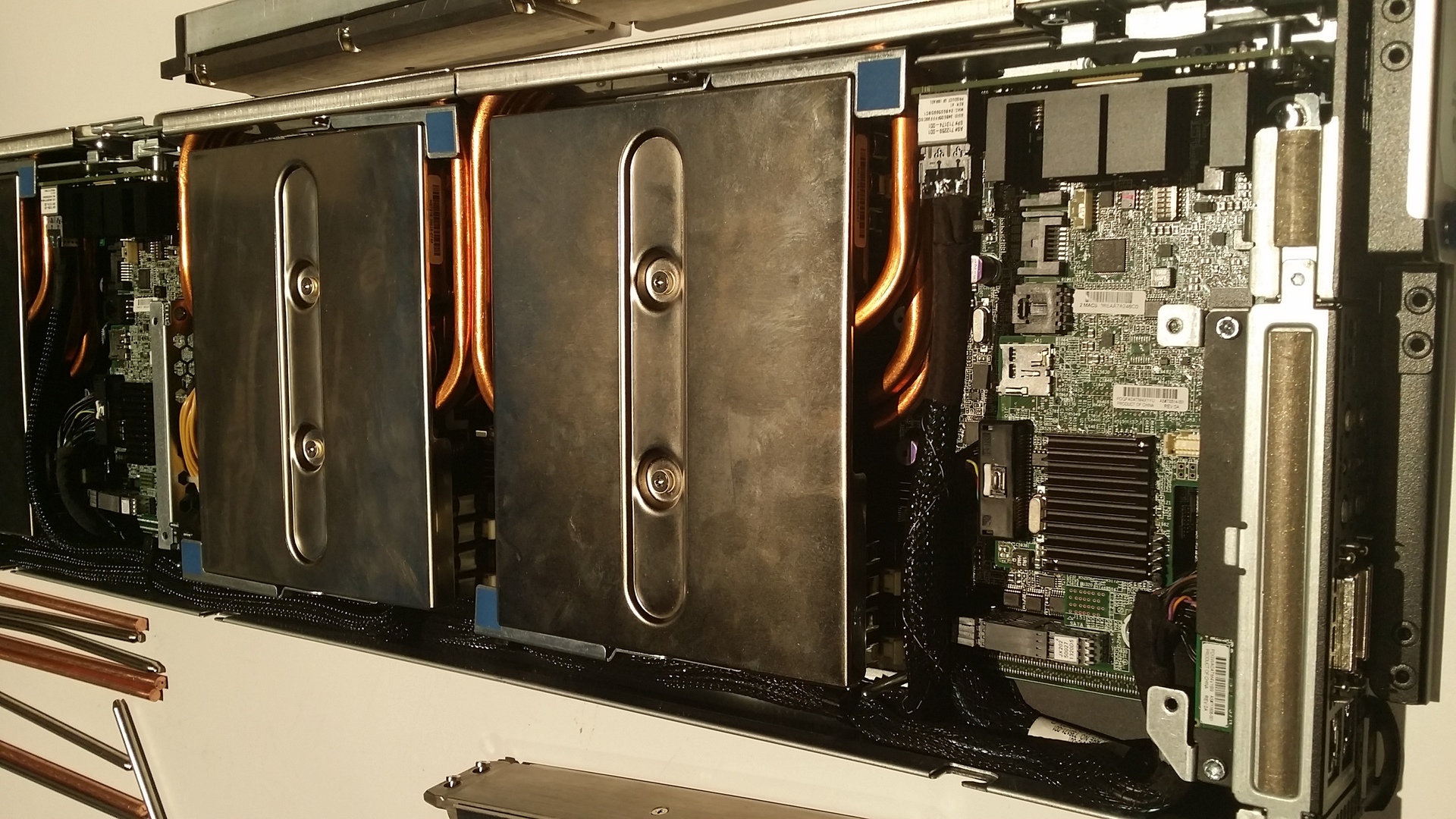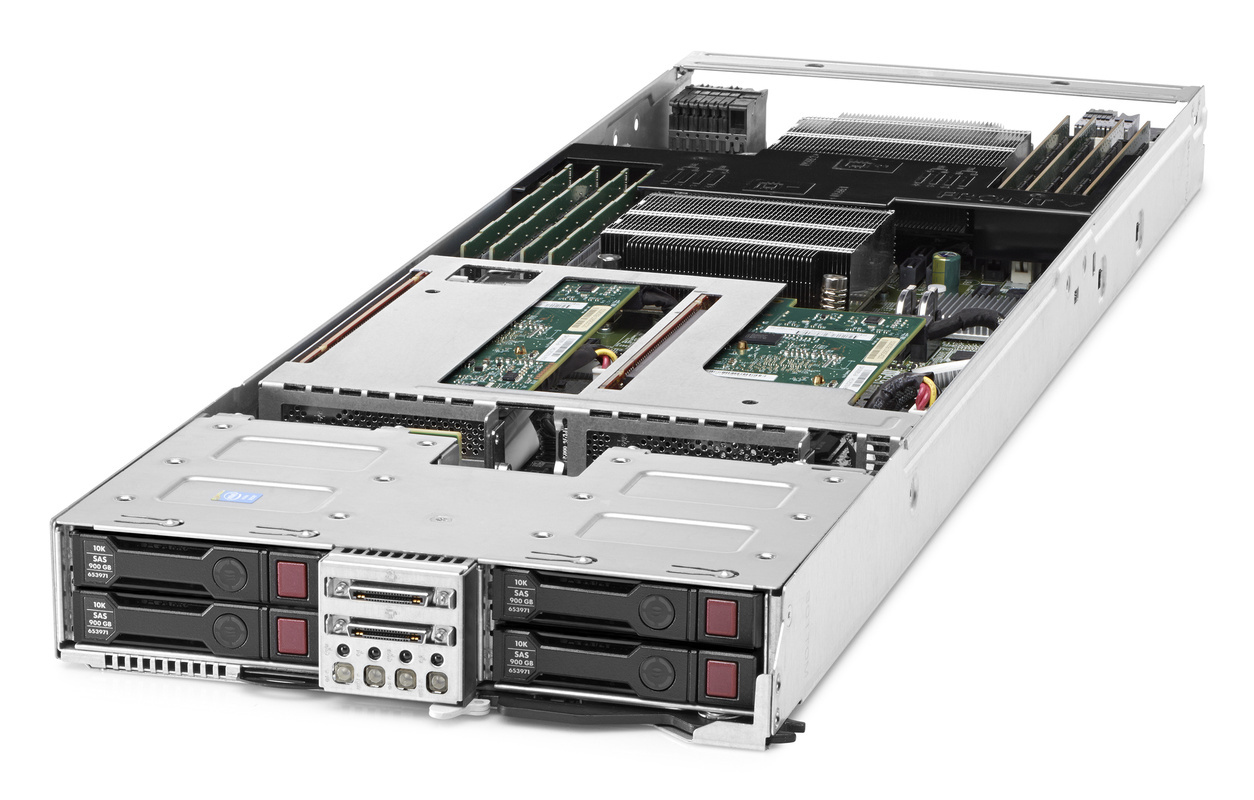HP Apollo 8000 Water Cool Supercomputer
HP Apollo 8000 is the first supercomputer in the world, built entirely on safe cooling with warm water and providing for "dry" shutdown of servers. Since water cooling is 1000 times more efficient than air cooling, you can use huge computational power in a standard rack without increasing the area for equipment. At the same time, you have the opportunity to reject expensive and inefficient cooling systems, and use hot water that has passed through the system for space heating.

The server uses a method patented by the company, which allows you to keep equipment away from water. Hewlett-Packard (HP) has entered the supercomputer market with a new series of Apollo systems, including a high-end machine with a non-standard water cooling system. For the first time, the company offered this product specifically for this market, although many supercomputers were assembled on HP equipment. The company introduced two Apollo systems: an air cooling system called the Apollo 6000 and an Apollo 8000 water cooling system. “Customers can get both systems now,” says Jim Ganthier, vice president of marketing for Standard Industrial Servers and Software at HP.
')
The HP Apollo 6000 air-cooled system allows you to optimize rack-scale performance to fit your budget and make high-performance computing accessible to a wide range of corporate customers.

The HP Apollo 8000 system is a supercomputer that combines the highest level of computing power and innovative design with cooling with warm water, which ensures ultra-low power consumption and the ability to reuse warm water.

The cost of energy needed to cool a supercomputer is one of the most significant. “Using liquid instead of air is more rational in removing heat,” said Ganthier, “but because of concerns about damage to composite parts when cooled by liquid, it progressed very slowly, so to speak, was in fashion.” Most of the recent work has focused on immersing servers in special fluids that do not conduct electricity, such as 3M Novec technical fluids (a family of low global warming potential solvents based on the 3M patented hydrofluoroether formula).
But the opposite tendency is observed in HP, just water circulates inside the system - everything is hermetic and at the same time safe. Apollo 8000 has two cooling systems that work in combination with each other. One of them is a water tower - or as HP calls it “water screen”. Water circulates in the tower, and removes heat from the blade servers connected to the other side of the wall.

Water independently circulates in the blade servers through sealed copper tubes connected to each central processor from below by a cooling radiator. Heat removal from radiators occurs in closed circuits. The first circuit removes the heated fluid from the radiators on the boards, the second functions as a common circuit for the rack, in which water circulates through the outer part. “Copper tubes are connected to a water screen, which removes heat from the rack. The vacuum inside the copper tubes prevents water from escaping in the unlikely event of a leak, as negative pressure occurs at the point of rupture, ”said Gantier.

HP reports a number of advantages of this cooling system in comparison with those that immerse servers in special fluids. First, engineers can remove HP blades without turning off the system. Secondly, Apollo 8000 is more rational in the use of space, since it does not require special containers with liquid for immersing servers.
The National Renewable Energy Laboratory, which, using supercomputers, conducts climate modeling, analyzes the emission of greenhouse gases into the atmosphere, became one of the first customers of Apollo 8000. HP assures that their system, known as Peregrine (Sapsan), has the greatest computing power today. resources of 582 teraflops and thanks to HP systems can be expanded to 1.19 petaflops.

When using the Apollo 8000 it is quite possible to place a large number of energy-intensive processors in a small space. Each rack can hold up to 144 servers, each with a dual-socket Xeon E5 processor and eight InfiniBand switches. Nobody can say the exact cost for HP Apollo 8000 systems, as the configuration parameters are too diverse, but it does not cause doubts that it will occupy its niche among high-performance systems.

The server uses a method patented by the company, which allows you to keep equipment away from water. Hewlett-Packard (HP) has entered the supercomputer market with a new series of Apollo systems, including a high-end machine with a non-standard water cooling system. For the first time, the company offered this product specifically for this market, although many supercomputers were assembled on HP equipment. The company introduced two Apollo systems: an air cooling system called the Apollo 6000 and an Apollo 8000 water cooling system. “Customers can get both systems now,” says Jim Ganthier, vice president of marketing for Standard Industrial Servers and Software at HP.
')
The HP Apollo 6000 air-cooled system allows you to optimize rack-scale performance to fit your budget and make high-performance computing accessible to a wide range of corporate customers.

The HP Apollo 8000 system is a supercomputer that combines the highest level of computing power and innovative design with cooling with warm water, which ensures ultra-low power consumption and the ability to reuse warm water.

The cost of energy needed to cool a supercomputer is one of the most significant. “Using liquid instead of air is more rational in removing heat,” said Ganthier, “but because of concerns about damage to composite parts when cooled by liquid, it progressed very slowly, so to speak, was in fashion.” Most of the recent work has focused on immersing servers in special fluids that do not conduct electricity, such as 3M Novec technical fluids (a family of low global warming potential solvents based on the 3M patented hydrofluoroether formula).
But the opposite tendency is observed in HP, just water circulates inside the system - everything is hermetic and at the same time safe. Apollo 8000 has two cooling systems that work in combination with each other. One of them is a water tower - or as HP calls it “water screen”. Water circulates in the tower, and removes heat from the blade servers connected to the other side of the wall.

Water independently circulates in the blade servers through sealed copper tubes connected to each central processor from below by a cooling radiator. Heat removal from radiators occurs in closed circuits. The first circuit removes the heated fluid from the radiators on the boards, the second functions as a common circuit for the rack, in which water circulates through the outer part. “Copper tubes are connected to a water screen, which removes heat from the rack. The vacuum inside the copper tubes prevents water from escaping in the unlikely event of a leak, as negative pressure occurs at the point of rupture, ”said Gantier.

HP reports a number of advantages of this cooling system in comparison with those that immerse servers in special fluids. First, engineers can remove HP blades without turning off the system. Secondly, Apollo 8000 is more rational in the use of space, since it does not require special containers with liquid for immersing servers.
The National Renewable Energy Laboratory, which, using supercomputers, conducts climate modeling, analyzes the emission of greenhouse gases into the atmosphere, became one of the first customers of Apollo 8000. HP assures that their system, known as Peregrine (Sapsan), has the greatest computing power today. resources of 582 teraflops and thanks to HP systems can be expanded to 1.19 petaflops.

When using the Apollo 8000 it is quite possible to place a large number of energy-intensive processors in a small space. Each rack can hold up to 144 servers, each with a dual-socket Xeon E5 processor and eight InfiniBand switches. Nobody can say the exact cost for HP Apollo 8000 systems, as the configuration parameters are too diverse, but it does not cause doubts that it will occupy its niche among high-performance systems.
Source: https://habr.com/ru/post/243693/
All Articles